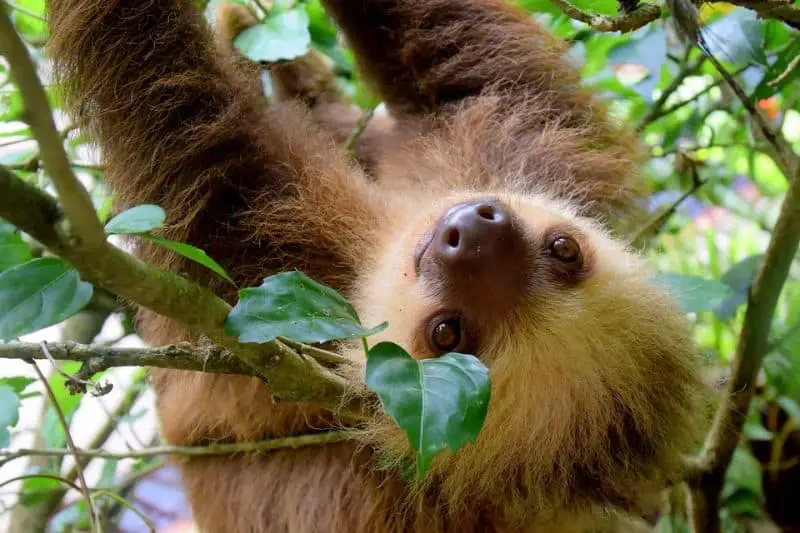Step into the enchanting realm of the Best Places to See Sloths! Have you ever dreamt of encountering these charming creatures in their natural habitat?
Sloths, those lovable and unhurried residents of treetops, are intricately tied to the well-being of Central and South American tropical forests. Among the diverse array of wildlife that graces South America, sloths carve out a unique niche as they spend their days in the canopy, peacefully dozing and expertly eluding predators. Join us on a journey to discover the top spots where you can witness these delightful creatures in their element!
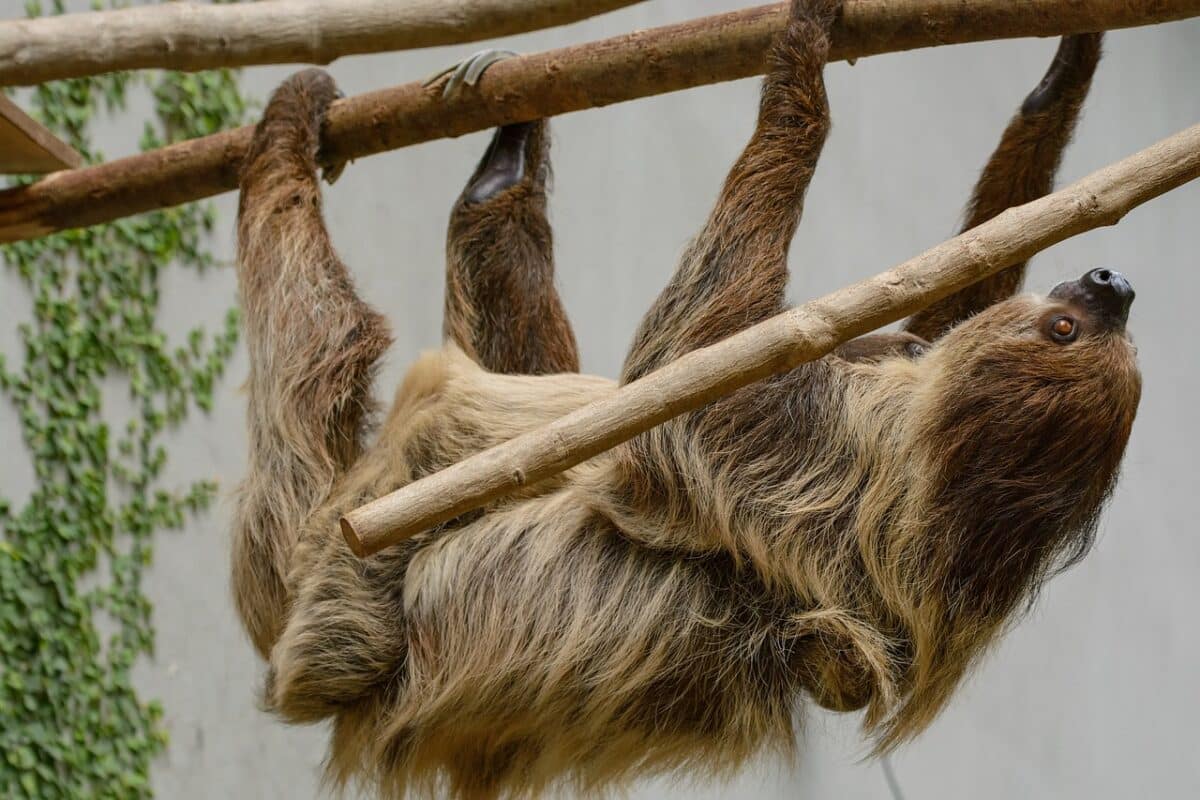
The animals live solitary lives and travel from tree to tree using canopy vines, and are often considered to be some fo the cutest wild animls. Located in places such as Brazil and Panama, the six species of this strange and wonderful animal need healthy forests to survive.
Are you as much of a sloth lover as we are? Read on to find your favorite facts about the sloths…
Key points
| Topic | Key Points |
|---|---|
| Types of Sloths | – Two main species: Two-toed Sloths and Three-toed Sloths. – Two-toed sloths are slightly bigger and spend more time hanging upside-down. – Three-toed sloths have facial coloring that makes them look like they’re always smiling and have extra neck vertebrae. |
| Best Places to see Sloths | – Tortuguero National Park is a highly likely place to spot sloths in the wild. – Sloth Sanctuary Costa Rica is a rescue center that provides care and rehabilitation for injured, orphaned, and abandoned sloths. – Emphasizes the importance of sustainable sloth tourism and avoiding exploitative practices. |
| Distribution & Habitat | – Sloths are found in Central America and northern South America, including parts of Brazil and Peru. – They live high in the trees of tropical rainforests and spend most of their time curled up or hanging upside down from branches. |
| Diet | – Sloths primarily eat leaves, twigs, and buds. – Their low metabolic rate allows them to survive on relatively little food. |
| Nature/Behavior | – They travel at a sluggish pace, averaging 41 yards per day. – Algae grows on their fur, aiding in camouflage. – Sloths sleep for about 15 hours per day and have a low body temperature. – They are capable swimmers and use swimming as a means of covering more ground. |
| Motherhood | – Female sloths give birth to one baby per year after a gestation period of six months. – The baby clings to the mother’s belly for about six months and learns from her. – Sloths maintain communication with their parents even after leaving their side. |
| Sloth Importance to Environment | – Sloths are integral components of the Amazon rainforest. |
| Evolution & Life Span | – Ancient sloths could grow as large as an elephant and roamed North America. – Sloths have an average life span of 20 to 30 years in the wild, but captive sloths tend to live longer. |
| Conservation | – The pygmy three-toed sloth is critically endangered. – Illegal trade of sloths is a threat, driven by high prices in urban areas. – Conservation efforts and donations are crucial for protecting sloths and their habitats. |
| Unsustainable Tourism | – Unsustainable tourism practices, such as using sloths as props for photos, cause stress and fear in sloths. – Sloths should be observed in their natural habitat, and holding them for photos should be avoided. – Ethical and responsible tourism is emphasized. |
| Summary of Best Places to see Sloths | – Sloths have evolved unique characteristics over thousands of years. – It is important to support ethical tourism and avoid exploitative encounters with sloths. – Tortuguero National Park and Sloth Sanctuary Costa Rica are mentioned as recommended places to see sloths. |
| Threats | – Sloth populations are dependent on the health of tropical rainforests. – Deforestation poses a significant threat to sloths and their habitats. |
Best Places to see Sloths
Tortuguero National Park is perhaps the world’s most likely place to spot a sloth in the wild.
Where to see sloths in sanctuaries
Established in 1997, the Sloth Sanctuary of Costa Rica stands as the pioneering rescue center dedicated to injured, orphaned, and abandoned sloths. Officially authorized as a rescue center, its mission encompasses the rescue, rehabilitation, research, and, whenever feasible, release of sloths. Beyond that, the sanctuary is committed to educating people about the importance of conserving the rainforest—the natural habitat of sloths.
Types of Sloths in the Wild
There are two primary species of sloth, distinguished by the number of claws on their front feet. These two species share a striking resemblance, featuring roundish heads, eyes with a melancholic expression, diminutive ears, and short tails.
#1 Two-toed Sloths

Two-toed sloths are marginally larger and exhibit a preference for hanging upside-down more frequently compared to their three-toed counterparts. In contrast, the three-toed sloths are inclined to sit upright in the fork of a tree branch.
#2 Three-toed Sloths

Three-toed sloths possess facial coloring that imparts a perpetual smiling appearance. Additionally, they boast two extra neck vertebrae, granting them the ability to rotate their heads almost a full 360 degrees!
Within these two types of sloths exist 6 species as follow:
- Pygmy three-toed sloth (Bradypus pygmaeus)
- Maned sloth (Bradypus torquatus)
- Pale-throated sloth (Bradypus tridactylus)
- Brown-throated sloth (Bradypus variegatus)
- Linnaeus’s two-toed sloth (Choloepus didactylus)
- Hoffman’s two-toed sloth (Choloepus hoffmanni)
Two-toed sloths tend to hang horizontally from branches, while three-toed sloths often sit in the forks of trees.
About the Best Places to see Sloths
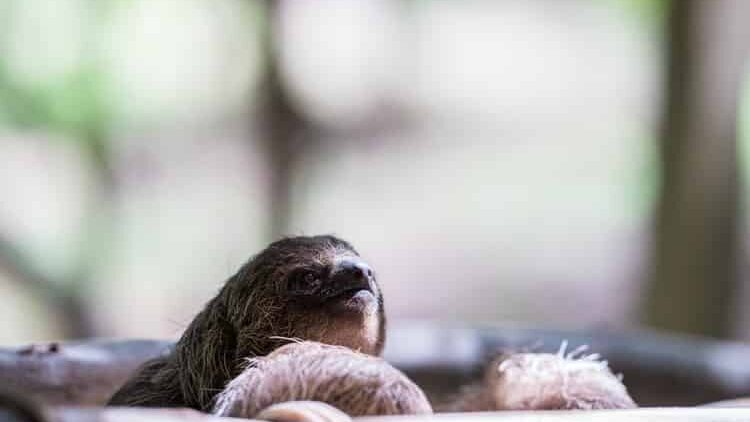
General
| Statistic | Two-toed Sloths | Three-toed Sloths |
|---|---|---|
| Number of Claws | Two | Three |
| Size | Slightly bigger | Smaller |
| Hanging Preference | Hang horizontally from branches | Often sit upright in trees |
| Facial Coloring | – | Smiling appearance |
| Extra Neck Vertebrae | No | Yes |
| Average Weight (kg) | 4.5 – 10 | 2.2 – 6.5 |
| Average Length (cm) | 55 – 75 | 42 – 80 |
| Gestation Period (days) | 150 | 152 – 243 |
| Sleeping Hours (per day) | 15 – 18 | – |
| Primary Habitat | Central and South America | Central and South America |
| Primary Diet | Leaves, twigs, buds | Leaves, twigs, buds |
| Metabolic Rate | Low | Low |
| Swimming Ability | Yes | Yes |
| Conservation Status | Not specified | Not specified |
| Statistic | Brown-throated Sloth | Maned Sloth | Pale-throated Sloth |
|---|---|---|---|
| Speed | 0.27 km/h | 0.24 km/h | 0.24 km/h |
| Daily Sleep | 15-18 hours | 15-18 hours | 15-18 hours |
| Scientific Name | Bradypus variegatus | Bradypus torquatus | Bradypus tridactylus |
| Mass | 2.2-6.3 kg | 4.5-10 kg | 3.8-6.5 kg |
| Gestation Period | 152-243 days | 150 days | 183 days |
| Length | 42-80 cm | 55-75 cm | 50-75 cm |
| Distribution | Central and South America | Central and South America | Central and South America |
| Habitat | Tropical rainforests | Tropical rainforests | Tropical rainforests |
Distribution & Habitat
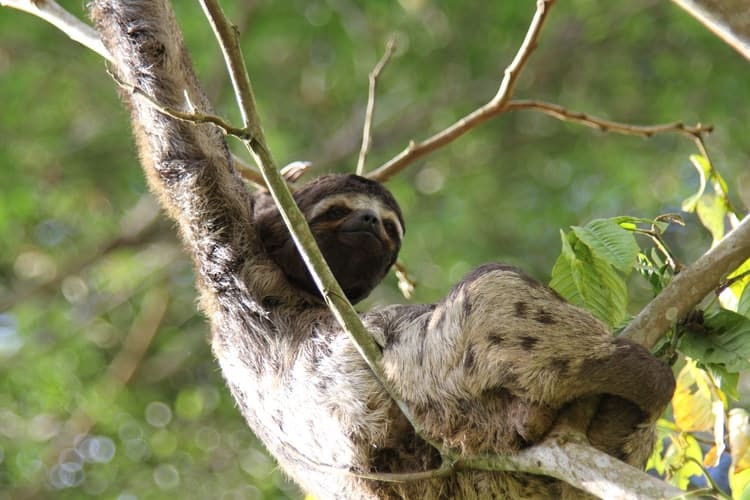
Sloths inhabit various regions across Central America and northern South America, extending into parts of Brazil and Peru. In the lush canopy of tropical rainforests, they make their homes high in the trees, often curled up or hanging upside down from branches. Adopting a predominantly solitary lifestyle, sloths navigate from tree to tree through canopy vines, spending a significant portion of their lives in this elevated habitat to snooze and evade predators. The strategy of remaining motionless and camouflaged off the ground contributes to their safety.
Diet
Sloths sustain themselves by munching on leaves, twigs, and buds. Lacking incisors, they trim down foliage by bringing their firm lips together. With an unusually low metabolic rate, sloths can survive on minimal food, taking days to process what other animals digest in mere hours.
Behavior
The unhurried pace of sloths results from their exceptionally low metabolic rate, causing them to move languidly through the trees. On average, sloths cover a mere 41 yards per day, less than half the length of a football field. Their leisurely movement allows algae, specifically Trichophilus, to grow on their fur, providing natural camouflage.
Sloths dedicate a significant portion of their lives to sleep, snoozing for about 15 hours per day. With a body temperature ranging from 86°F to 93°F, they regulate it by moving in and out of shade. In their tree homes, sloths revolve around a routine of eating and sleeping.
Despite their slow climbing, sloths showcase impressive swimming abilities. Naturally buoyant, they effortlessly execute the breaststroke, much like humans. Given their habitat in rainforests susceptible to seasonal flooding, swimming becomes crucial for survival. Additionally, swimming enables sloths to cover more ground efficiently when seeking a mate or exploring new territories.
Motherhood
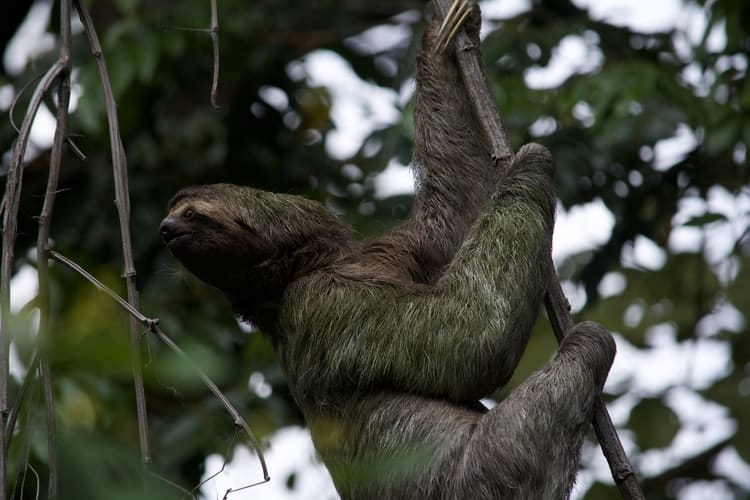
Female sloths give birth to a single offspring each year following a gestation period that spans from five to six months for species like the pale-throated sloth (Bradypus tridactylus) to 11.5 months for the Hoffman’s two-toed sloth (Choloepus hoffmanni). This intimate bonding period lasts approximately six months, during which the baby clings to its mother’s belly as she navigates the treetops.
The crucial bonding phase facilitates the offspring’s learning and development. After this initial period, the young sloth adopts a portion of its mother’s territory and maintains communication through calls. The newborns, born singly, exhibit a patient pace in their development. They remain attached to their mother’s belly until they acquire the ability to self-feed, a process lasting anywhere from five weeks to six months, as noted by the Encyclopedia Britannica.
Even after ceasing to dangle from their mother, young sloths remain in close proximity for an extended period, staying by their mother’s side for two to four years, depending on their species.
Sloth importance to environment
Sloths are integral components of the Amazon rainforest. They foster a symbiotic relationship with a species of algae found only on sloths and nowhere else
Evolution & Life span
In ancient times, sloths attained sizes comparable to elephants, inhabiting North America before becoming extinct approximately 10,000 years ago. The predecessors of today’s sloths resided in North America.
Sloths typically boast an average lifespan of 20 to 30 years in their natural habitat, although those in captivity often enjoy a slightly longer life.
Conservation
The pygmy three-toed sloth, scientifically known as Bradypus pygmaeus, faces a critical endangerment status. A comprehensive survey of the population revealed that this species, with fewer than 100 individuals remaining, stands as one of the most endangered mammals globally. Further insights into South America’s most endangered animals can be explored in one of our related articles.
Make a donation
You can help us to conserve these incredible animals by donating whatever you can – every single dollar counts! With your help, we passionately believe that we can make a positive impact to the conservation of sloths throughout Central and South America.
The Sloth Conservation Foundation
Threats
The well-being of sloth populations is intricately linked to the vitality of tropical rainforests, yet these ecosystems face the imminent threat of deforestation. The lucrative prices sloths can fetch in urban areas or affluent nations have fueled an illicit market for these creatures in vulnerable communities. In such areas, the sale of a single baby sloth can amount to a sum far exceeding the weekly or monthly earnings of residents in rural communities. These animals are illicitly peddled on roads, squares, and even by request, exacerbating the challenges faced by these unique creatures and their ecosystems.
Unsustainable tourism
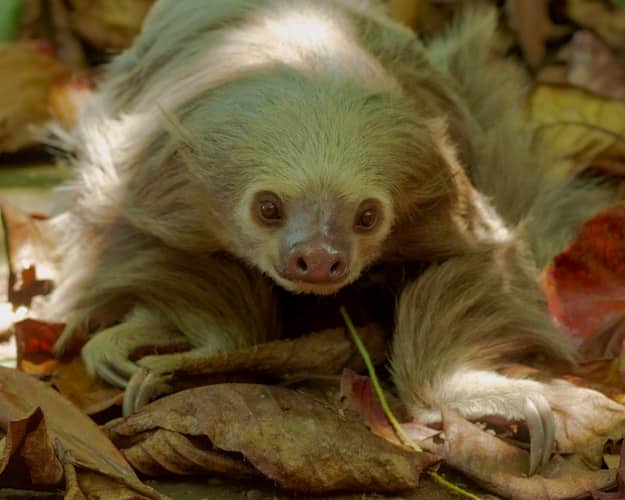
In their natural habitat, sloths lead tranquil, unhurried lives. However, when utilized as accessories for tourist photographs, they are subjected to constant noise and often mishandled by both guides and visitors. Studies indicate that sloths are frequently grasped by their claws or arms without adequate support, leading to heightened levels of fear and stress.
When traveling, opt to capture images of sloths and other wildlife in their native environments. Politely decline offers to hold a sloth for a photograph. This is a crucial consideration for those seeking the best places to see sloths.
Sustainable Sloth Tourism
Tourists frequently encounter sloths that are low down or crawling across the ground between trees, and in excitement (or perhaps in an attempt to get the perfect selfie) they often crowd the animal, make a lot of noise and even reach out to touch the fur.
In high tourist areas sloths are also commonly exhibited by the side of the road, with unsuspecting tourists being charged to take a photo with the animal. In reality, these sloths have been pulled from the trees, often the mother will be killed, and the baby used as a photo prop until it dies (or someone pays to rescue it). The sloth is then replaced in a vicious money-making cycle.
Summary of Best Places to see Sloths
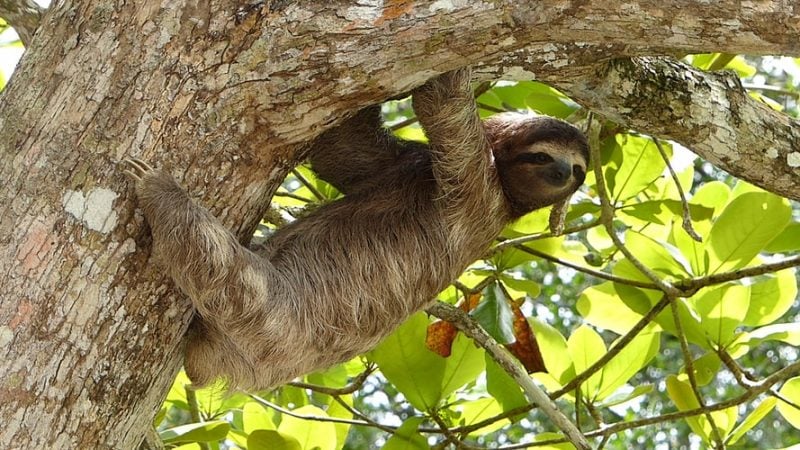
Sloths have evolved into the adorable animals that the world has grown to love over thousands of years. The slowest animals in the world, they are unique to their environments and also very vunerable to the threats posed on their habitats.
Although it is very possible to cuddle these cuties, we recommend only visiting ethical tourism that does not affect the wellness of sloths involved. It is important to do your own research before supporting advertized sloth encounters.
If you loved learning about sloths in the wild, you can have a look at other animals in the Amazon! Let us know which of these animals you have seen or wish to see in the future!
Explore South America’s Diversity by reading our article on all its animals.
Become more involved by learning about 21 Most Endangered Animals In North America and 10 Most Endangered Animals in South America
If you are looking for something new and fresh, Watch a Chimpanzee throw a Water Bottle at Zoo Visitor!
Frequently Asked Questions (FAQs)
Q: What are sloths?
A: Sloths are arboreal mammals known for their slow movement and low metabolic rate. They belong to the order Pilosa and are primarily found in the rainforests of Central and South America.
Q: Why are they called “two-toed” and “three-toed” sloths?
A: The terms “two-toed” and “three-toed” sloths refer to the number of toes on their front limbs. Both types of sloths actually have three toes on their hind limbs. The difference lies in the front limbs, where two-toed sloths have two long, curved claws, while three-toed sloths have three claws.
Q: What do sloths eat?
A: Sloths are herbivorous animals and primarily feed on leaves. Their diet consists mainly of the leaves from a variety of trees, and they have specialized teeth for grinding and chewing tough vegetation.
Q: Why are sloths so slow?
A: Sloths have a slow metabolic rate and move slowly due to their specialized adaptations. Their low-energy diet and slow digestion help them conserve energy. Moving slowly also helps them avoid detection by predators, as their greenish fur blends in with the surrounding foliage.
Q: How long do sloths sleep?
A: Sloths are known for their extended periods of sleep. They can sleep anywhere from 10 to 20 hours a day, depending on the species. Their slow metabolism and low-energy diet contribute to their need for extensive rest.
- Top 10 Cutest Fish in the World - April 15, 2024
- 10 Most Endangered Animals - April 15, 2024
- 16 Top Predators in the Food Chain - April 12, 2024

